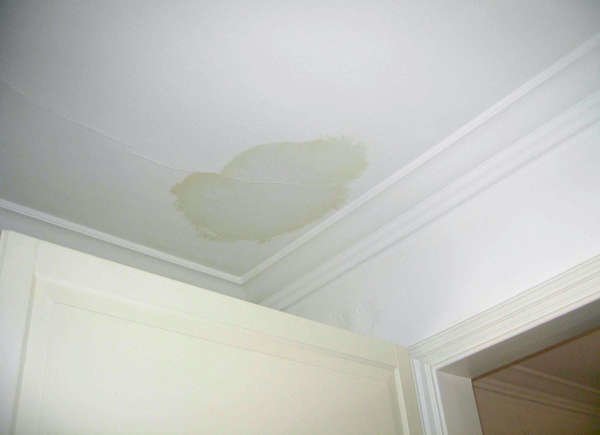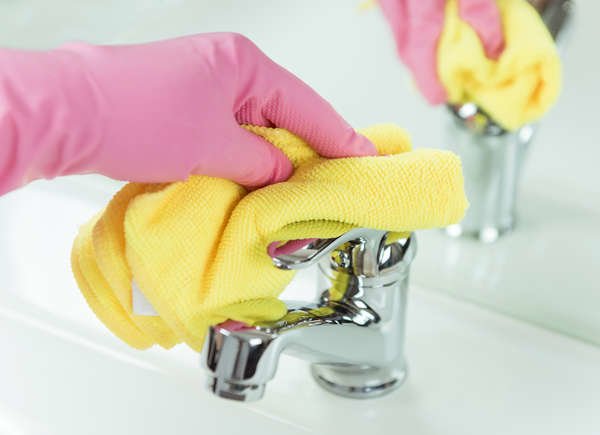14 Home Maintenance Mistakes That Only Take a Minute to Fix
Keeping your home in top-notch condition doesn’t mean spending all your free time on maintenance chores; some upkeep and repair projects can be done quickly and without the help (and expense) of a pro. If you have just a few minutes here and there, you can perform the following fast fixes without taking time away from your daily activities. Stop procrastinating and start getting your home shipshape!
By Glenda Taylor
Worn Fridge Seals

If the magnetic seals on your refrigerator door aren’t sealing tightly, air can leak into the fridge, which forces the appliance to work overtime and shortens its useful life. Fortunately, replacing the seals is a super-quick DIY project. You’ll need a screwdriver to remove the metal strip that holds the old seal in place (look under the lip of the seal). Replacement seals can then be attached in the reverse manner. All you need is a few minutes and a seal replacement kit, such as the Frost King Kit.
Sticking Vinyl Window

Vinyl windows are affordable, long-lasting, and great at keeping out cold drafts. One downside of vinyl windows, however, is that over time dirt and grime can accumulate in the window tracks, which can make it difficult to open and close the windows. Banish the gunk and lubricate the window tracks with a little dry-type silicone spray, such as 3M Silicone Spray. Point and spray the crevice between the window and the jamb, then open the window and wipe the inside of the track with a clean cloth.
Wobbly Shower Head Woes

A shower head can begin to wobble when the pipe in the wall works loose over time—but stabilizing the pipe and steadying the shower head is a snap! Slide the shower head trim ring away from the wall (you may need a screwdriver) to reveal the base of the pipe and the hole beneath. Spray a little bit of expanding foam, such as GREAT STUFF Foam Sealant into the hole (not into the pipe), using the straw that comes with the can. The foam will swell and harden around the exterior of the pipe, stabilizing it. Slip the trim ring back into place and enjoy your new firm shower head.
Squeaky Wood Floors

When wood rubs against wood it squeaks, sometimes quite loudly. If you have hardwood floors, you probably have one or two areas that always squeak when you walk on them. You can silence a noisy wood floor with a little bit of cornstarch. Just sprinkle it over an area that creaks, and then use a broom to sweep it into the cracks between the boards. The cornstarch will act as a dry lubricant between the wood surfaces to quiet the creaking.
Ugly Ceiling Stains

A leaky roof or a dripping pipe can run down and stain the ceiling below, leaving a dirty yellow mark that makes the whole room look dilapidated. If you’re not in the mood to repaint your entire ceiling, there’s a great way you can remove (or at least noticeably fade) the stain. Repair the leak first, and then fill a spray bottle with household bleach and water, using one-part bleach to five parts water. Spray the stain thoroughly with the solution. Within hours, the stain will fade noticeably—or even completely.
Reduced Faucet Flow

Hard water deposits and little bits of debris can clog faucets and affect water flow. Good news, you don’t have to replace the faucet, but a little cleaning is in order. On the end of the faucet is a tiny aerator screen where debris can become trapped. When the screen is full of debris, it slows the water flow or forces it to spray out to one side. The aerator screen can be removed by twisting it to the left. Soak the screen in white vinegar to dissolve hard water deposits overnight and then reattach it.
Loose Wallpaper Seams
Loose Wallpaper Seams

Wallpaper that wasn’t glued properly during installation has a tendency to come loose at the seams, making the entire wall look shabby, but it takes only a minute to fix. Soften loose paper by spraying the area with hot water, and then squeeze a little seam adhesive, such as Red Devil Wallpaper Repair Adhesive beneath the loose section. Press the paper firmly back into place, and then wipe away any excess with a damp cloth.
Squeaky Doors

Doors that creak and moan when they’re opened and closed don’t hurt anything, but they sure can be annoying. Silence the squeak with lubricating spray, such as WD-40. Use the straw that comes with the can to direct the spray to the top crease in the hinge. Use the lubricant sparingly—a tiny bit goes a long way. It’s a good idea to hold a rag or paper towel behind the hinge as you spray to protect the door or jamb from overspray.
Banging Cabinet Doors

If your cabinet doors bang loudly every time you shut them, the problem can be solved instantly by installing bumpers, such as GorillaGrit Cabinet Door Bumpers. Clean the cabinet door to remove gunk or residue, and then position two bumpers on its inside edge, one at about ½-inch from the bottom and another at the same distance from the top. Make sure you attach the peel-and-stick bumpers where the door makes contact with the cabinet base to muffle the sound of the cabinets closing.
Unsightly Stains

Hard water can wreak havoc on tubs, showers, and sinks, leaving dark and dingy orange-brown stains that don’t come off with regular household cleaners. If you don’t relish using caustic cleaning products, or spending hours scrubbing the stains away, here’s a quicker fix. Mix lemon juice and cream of tartar (available in your grocer’s spice aisle) to form a paste, and then apply the paste directly to the stains. Leave the mixture on the stain for an hour and then rinse away to reveal a sparkling clean fixture.
Drafty Doors

An exterior door that doesn’t seal tightly when closed lets in cold drafts, which can result in increased heating bills. Stopping drafts is a simple fix that requires removing the old weatherstripping (just pull and scrape it off) and then installing new peel-and-stick weatherstripping. Opt for a weatherstripping kit, such as the WeatherGuard Door Insulating Kit that comes with a bottom door seal in addition to regular weatherstripping for an airtight seal.
Sticking Door Lock

Do you have to jiggle, coax, or turn the key forcefully to unlock your door? Corrosion and dirt buildup can make it difficult to use a key in a door lock—but if you're experiencing problems, wait before you run out to replace a tricky lock. Try rubbing the cuts on the key with the lead of a graphite pencil, or squirt a little powdered graphite, such as Panef L-300 Powered Graphite into the opening in the lock. The graphite works to lubricate the tumblers in the lock so your key will turn with ease.
Sticky Wooden Drawers
Sticking Wooden Drawers

Over time, wooden drawers can begin to stick, making it difficult to open and close them, but you don’t have to live with sticky drawer syndrome. To help the drawer slide smoothly again, remove it from the cabinet and turn it over so you have access to the underside. Rub a bar of paraffin (found in your grocer’s canning aisle) along the both bottom edges of the drawer. The paraffin will lubricate the drawer and help it slide smoothly.
Moldy Washer

If your clothes come out of the washer smelling musty instead of clean, you probably have a bit of mildew in your washer. Fortunately, banishing the mildew is a quick and simple project. Put one cup of baking soda in the washer, and run one empty load on the hottest water setting. The baking soda will clean and remove all mildew growth so you can have fresh-smelling laundry again.
Comments
Post a Comment